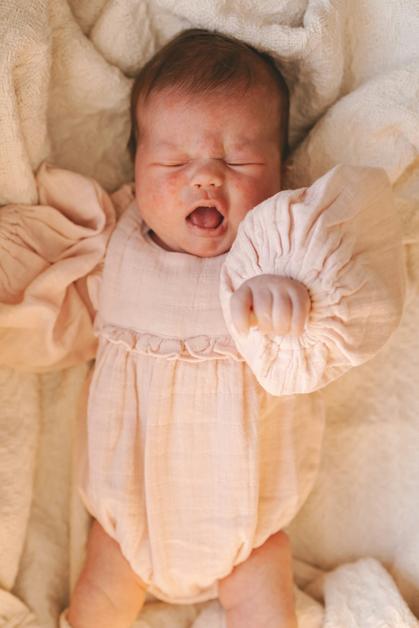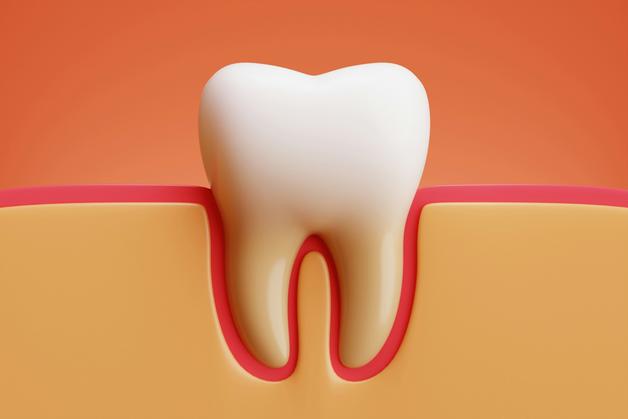Parenting often feels like a thrilling journey mixed with moments of doubt—especially when watching your child grow and wondering, “Is this normal?” The beauty and complexity intertwined in child motor development stages can raise countless questions, sometimes even a touch of worry. The first head lift, that unsteady roll, the clumsy crawl, and finally those magical steps—each phase brings new triumphs but also its share of uncertainties. How can you encourage these milestones? When is a delay actually concerning, and which factors make a real difference? Here, evidence-backed explanations partner with everyday advice, reshaping the way you observe and support your child’s unfolding abilities. Scientific, practical, and empathetic, the following roadmap is designed for parents who want not only reassurance but real understanding about what shapes every twist and turn of movement in early life.
Understanding Child Motor Development Stages: From Reflex to Mastery
What are Motor Skills? Fine vs Gross Explained—Simply
From the earliest flickers of movement, child motor development stages arise thanks to carefully orchestrated muscle actions. These begin as spontaneous, almost random twitches but soon reveal remarkable design. Reflexes, those automatic newborn responses—like grasping a finger or turning the head toward touch—are soon joined by robust gross motor skills (think: controlling the head, rolling, crawling, standing, walking) using broad muscle groups. The magic of dexterity appears later, through fine motor skills: picking up a crumb with thumb and finger, scribbling with a crayon, buttoning shirts. Grasping these concepts? It simply means knowing that larger, foundational movements lay the groundwork for precision and detail later on.
Why Do These Movements Matter? The Joy (and the Science)
Isn’t it astonishing how playtime turns into brain growth? When a baby reaches, kicks or simply gazes at a dangling toy, thousands of neural pathways are firing. Every stretch, squirm and playful wiggle strengthens the very circuits controlling movement. Scientific studies highlight how varied, stimulating environments fuel brain maturity and skill development. No two children explore their world in exactly the same way, but those with encouragement—and space to move—often develop more robust abilities (and confidence, too).
How Do You Know Progress Is on Track? Patterns and Variations
Does your little one seem to wow you one week, then “hold back” the next? You’re not imagining things. Child motor development stages often follow a head-to-toe sequence and evolve from simple to complex actions. While milestone charts provide average timeframes, outliers exist. Typically, broad patterns look like:
- Newborn reflexes: tightly clenched hands, random kicks, rooting motions.
- 2–4 months: Holding up the head briefly, waving arms, stretching, and folding limbs.
- 5–8 months: Rolling over, reaching for objects, improving trunk strength.
- 8–12 months: Crawling, sitting unaided, pulling to stand, cruising along furniture.
- Into toddlerhood (12–24 months): Walking, running, stacking blocks. Using utensils creeps in.
- Preschool and beyond: Jumping, hopping, balancing, drawing, snipping, and managing zips or shoelaces.
Genetics, nutrition, and day-to-day opportunities all play a part, and “late bloomers”—contrary to popular fears—often catch up with their peers given time and support.
The Foundations Behind Motor Development: What Shapes the Journey
Genes, Brain Maturation, and Daily Experience
Picture this—development is a duet between biology and what happens outside. Some children have inborn conditions, such as cerebral palsy or muscular dystrophy, that require tailored attention. For most, healthy neurological development—maturing connections between brain regions and nerves—is essential. Yet, that’s only half the story. Nutrition, safe play zones, attentive interaction, and opportunities for repeated movement help unlock potential. Studies underline the effects of socioeconomic background and early intervention: for some, a rich sensory world can partially offset even significant challenges.
The Balance of Brain and Body
How does repetitive play polish those early skills? The answer lies in the way practice reshapes neural pathways. Newborn reflexes—essential, but fleeting—give way to voluntary control as the brain “hardwires” chosen movements. Sitting up, for instance, emerges only once multiple muscles and brain regions synchronize smoothly. Physical progress is tightly woven with emotional growth, too—confidence blossoms with each new achievement.
Connections Beyond Muscles: Thinking, Feeling, Sharing
Remarkably, the child motor development stages also foster cognitive leaps and social awareness. Children who move well often seem more eager to explore, solve problems, and collaborate with peers. Pretend games, drawing, and early sports aren’t just fun—they also lay the groundwork for curiosity and empathy.
Charting the Stages: A Timeline from Newborn to School Age
Newborn to Infant (0–12 Months): Reflexes, Rolls and Reaching
Tiny kicks and clenched fists slowly yield to more deliberate head movements, deep gazes and eventually reaching toward toys. Around 3–4 months, parents might notice the classic “mini push-up” on the tummy—an early sign of back and neck strength. Each roll, wiggle or attempt to grasp builds coordination.
Toddlerhood (9–18 Months): Standing Tall, Stepping Bold
With muscle strength peaking and balance improving, most children transition from crawling to unsteady standing, then to those uncertain first steps (commonly between 11–18 months). The world suddenly expands—blocks get stacked, objects are transferred between hands, and curious little fingers probe every texture found.
Preschool Leap (18 Months–3 Years): Climbing, Scribbling, Socialising
Preschoolers are tireless explorers. Climbing, running, jumping, dancing, or even attempting a somersault—these actions aren’t only about fitness; they support brain development and emotional growth. Small motor skills keep pace: drawing circles, using simple scissors, and manipulating stickers all make their entrance by age three.
Early Childhood (3–7 Years): Coordination Refined
Older children showcase growing dexterity—catching balls, hopping, and performing intricate craft activities. Shoelaces get tied, scissors handled with more ease, writing becomes more controlled, and bikes finally hold their promise of freedom.
Recognising Typical vs Atypical Progress: When Concerns Arise
Signs Worth Watching
Every parent wonders if their child is “on track.” Marked delays—like lack of head control by 3 months, not sitting by 9 months, or not walking by 18 months—deserve gentle attention. Persistent clumsiness, trouble with daily skills (like self-feeding or drawing), or clear asymmetry (using one hand much more than the other, unusual muscle stiffness or floppiness) may suggest more specific concerns. Developmental Coordination Disorder (characterised by broad clumsiness and difficulty with routine tasks), cerebral palsy (which may feature stiff or weak muscles, involuntary movements, or delayed milestones), and dyspraxia (difficulty in planning and sequencing movements) are clinical terms that can be intimidating—but early support has been shown to boost long-term outcomes.
Early Intervention: Why Timing Matters
Prompt conversations with a paediatrician, especially for children born premature or after difficult deliveries, can lead to the right screening and timely referrals. Scientific consensus confirms: earlier attention often means better progress.
Everyday Challenges in Motor Development: Influences and Modifiers
Physical Factors
Prematurity, lower birth weight, or neurological differences can influence child motor development stages, sometimes extending the time needed for new skills to emerge. Recognising individual tempo matters as much as tracking averages.
The Environment: Toys, Screens and Beyond
Movement thrives in stimulus-rich surroundings. Play mats, sensory play tools, pillows, blocks and floor time invite experimentation. Prolonged screen exposure, by contrast, can slow growth of skills by limiting both physical energy and learning through the senses—a key finding of pediatric research worldwide.
The Mind-Body Connection
Focus and sensory processing affect coordination, too. Children who struggle to manage the sights, sounds, or even the feel of certain activities can benefit enormously from OT (occupational therapy) or PT (physical therapy). Early identification, via simple checklists and short professional assessments, helps clarify these challenges.
Monitoring and Supporting Progress: Science Meets Home Life
How Skills Are Checked
Health professionals reach for structured assessments like the Denver Developmental Screening Test and the Ages and Stages Questionnaire—proven tools for tracking progress against global averages. Parents, meanwhile, become experts through observation. Is your child pushing up, rolling, sitting, walking, grasping, or self-feeding in a growing variety of situations?
Building an Encouraging Routine
Transforming everyday life into a mini gym isn’t as hard as it seems:
- Infants flourish with tummy time, soft rattles, and toys to reach for.
- Toddlers thrive while stacking, scribbling, climbing, or exploring kitchen containers.
- Preschoolers benefit from play-dough, balancing games, skip ropes, and park adventures.
- Older children stretch their mastery through cycling, team sports, intricate construction play and writing practice.
Safety is paramount—creating risk-free zones, offering supervised challenges, and celebrating each attempt.
Choosing the Right Tools
Open-ended playthings help the most—blocks, soft balls, puzzles, shape sorters, and books with textures for little hands. The emphasis is on stimulating experimentation, not just passive entertainment.
The Role of Nutrition, Sleep, and Health
Balanced diets, plentiful hydration, and regular sleep underpin the child motor development stages. Deficiencies or irregular routines don’t simply slow the pace; they may also lengthen the time needed to “lock in” new skills. Scientific literature repeatedly validates the power of daily rhythm.
When Therapy Helps
Physical therapy focuses on big movements; occupational therapy polishes the small. Early and consistent sessions help children gain confidence, become more independent, and overcome obstacles presented by underlying health issues.
The Parent’s Role: Espousing Care and Curiosity
Keeping Track at Home
Parental logs or milestone tracking charts can surface subtle delays or strengths. Watching for smooth progression—head control, rolling, independent sitting/walking, and self-care (feeding, drawing)—offers a clear window into development.
Making Every Moment Count
Routine chores and active play blend effortlessly: stacking laundry, dancing to music, or creating obstacle courses out of couch cushions all encourage skill-building. Consistency, not perfection, is the secret ingredient.
Seeking Guidance, Without Delay
Following instincts matters. Spotting a plateau or regression? Early input from a healthcare provider often makes troubleshooting easier. Where available, community early intervention resources close gaps before they widen.
Teamwork: Parents, Teachers, and Therapists
Open dialogue with teachers, paediatricians and therapists fosters a coordinated plan, empowering children through teamwork.
Key Takeaways
- Child motor development stages unfold in predictable yet flexible patterns, varying in both timing and expression. Not every child follows the textbook route—gentle variation is often expected.
- Mastery of movement results from a mix of genetics, maturing brain circuits, environmental stimulus, and family advocacy.
- Early review with developmental benchmarks and parent-friendly checklists offers reassurance and clarity.
- Toys, household items, songs and daily routines serve as the best “equipment”—no specialty gear required.
- Longstanding delays, specific asymmetries, or ongoing trouble with daily movement do justify an expert opinion.
- Trust in encouragement, gentle persistence, and your observations as a parent. Assistance, when required, is accessible and effective—especially with science on your side.
- For additional guidance, personalised health questionnaires, and practical advice, download the application Heloa.
Questions Parents Ask
What are the main stages of motor development in children?
Looking at the child motor development stages, the progression is visibly layered. First, involuntary newborn reflexes—sucking, grasping, staring. Gradually, your baby lifts their head, manages a roll, then sits up or reaches for toys. Crawling, standing and walking solo usually follow. With confidence, actions refine: running, jumping, and balancing, then drawing, building and even riding tricycles. Each child dances to their own rhythm—some may skip, reverse or speed through stages. Delays aren’t always a sign of a problem, but if curiosity lingers, a health professional can clarify what’s within the “broad normal”.
When should I worry about delays in motor development?
Milestones are a guideline, not a stopwatch. Not rolling by 6 months, not sitting with support by 9 months, or not making any attempt to walk by 18 months—these may prompt another look. Small, temporary delays are often normal. Ongoing difficulty with balance, self-feeding, climbing stairs, or using drawing tools? Worth mentioning to a doctor, as underlying issues sometimes respond best to early help.
How can I encourage my child’s motor development at home?
Simple yet consistent activities work wonders. Infants warm to tummy time, reaching, and grasping safe objects. Toddlers love climbing over pillows, stacking, scribbling, or playful ball games. Preschoolers thrive on tricycle rides, hopping, playground play, drawing, cutting and building towers. Even daily chores—turning clean-up into a dance or using make-believe obstacle courses—spur creativity, strength and coordination. Patience, visible encouragement, and small repeatable challenges offer the best foundation for skill-building at every turn.
Further reading:









